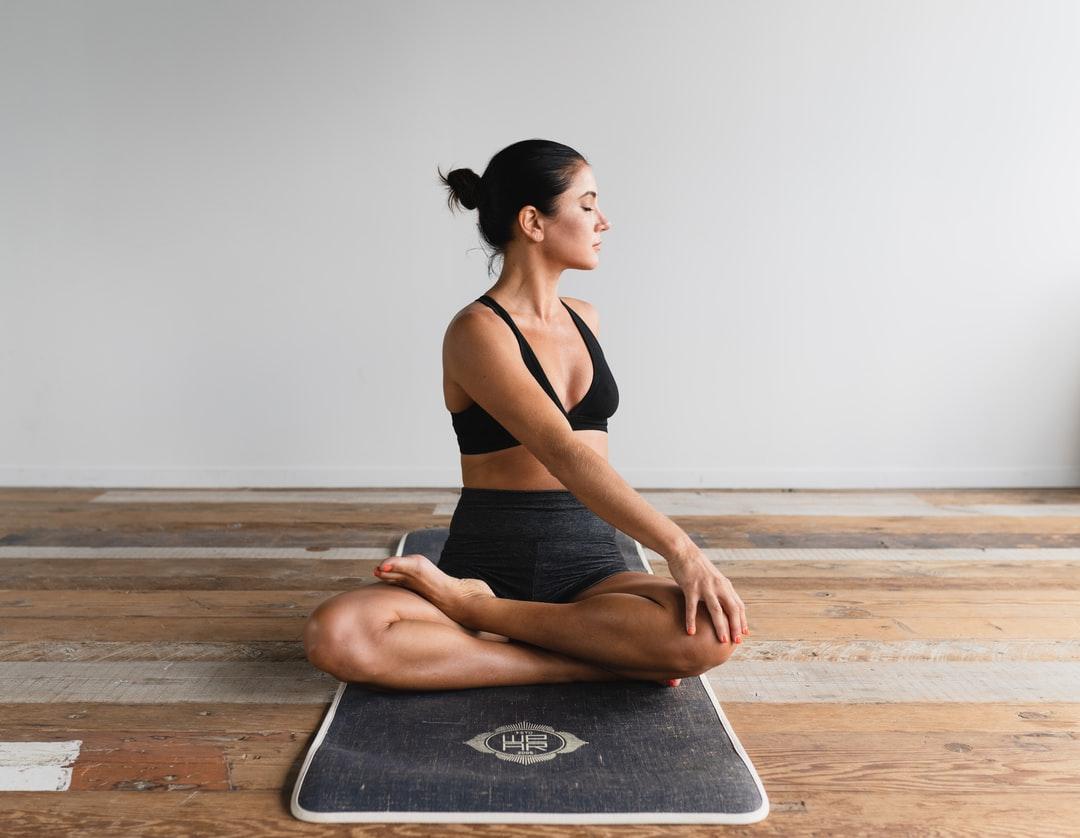The first time I ever entered an ashram was in 2009. I’d been invited to a yoga class by a friend from college who gave me no background on the teachings or what to expect, so everything about the philosophy was new to me. I picked up a leaflet hoping to get some insight.
My eyes fell on the italic words halfway down the page:
“As you forget self in service to others, you will find that, without seeking it, your own cup of happiness will be full.” — Paramhansa Yogananda
Something deep inside of me clicked. A lifetime of being mistreated by religious individuals and the loss of both parents in the four years prior to reading those words had left me confused and resentful toward any mention of God. I didn’t resonate with dogma and couldn’t wrap my head around faith. I understood service.
I’d taken a few yoga classes before and even enrolled in it as an elective for college. I still had no idea what it really was, only that I was jealous of how the instructor looked in the poses.
Fast forward.
I am currently a yoga instructor with more than 500 hours of training, my most proud of which being under one of my childhood wrestling heroes turned yoga instructor, Diamond Dallas Page. Despite consistency and the best training, I still can’t touch my toes. I get strange looks when I tell people this, especially students. They question my ability to teach them because of my body’s inability to appear as they believe it should. I get it, I was once that person.
The truth is, I know the proper alignment. I can offer countless adjustments for every pose. I can name the muscle groups they are stretching and could call out the Sanskrit names in my sleep. Yet it’s hard for many to comprehend that someone can be a “real” yogi or yogini without being able to melt effortlessly into the deepest version of every asana.

Yoga is Not About Flexibility
My Uttanasana and Adho Mukha Svanasana may not be as aesthetically appealing as some of the practitioners on Instagram. With first time students, such pictures may be their only previous exposure to yoga. For many, yoga equates flexibility and nothing more.
There are two things that contribute to my lack of flexibility: a hamstring injury that has left that muscle group tight despite years of daily asana practice and that aspect of yoga not being the path that I most passionately align with. Do I do it regularly? Yes. However, my physical practice is only around 10-20 minutes a day. I used to bitterly force myself through at least an hour with an additional fifteen minute meditation. It didn’t feel authentic for me. I didn’t enjoy it. That pamphlet was the first thing to tell me that this was absolutely okay! It was the first thing that introduced me to the idea of yoga being something more than down dogs and Savasana.
Yoga is More Than Asanas & Poses
It didn’t take me long to learn that, traditionally, yoga wasn’t about the asanas. The roots of yoga were founded in a philosophy of union, the Sanskrit meaning of the word itself. Union of the mind, body and soul. Union of the self with the divine. It’s the concept of every person being a part of universal consciousness. Learning this and shortening my daily asana practice was when I began really feeling the mental and physical benefits.
The Four Paths of Yoga
There are four main paths of yoga: Raja Yoga, Bhakti Yoga, Jnana Yoga and Karma Yoga.
Raja yoga is about gaining control of the mind and body. It focuses on meditation and energy in movement. It is from Raja yoga that modern asana practice developed.
Bhakti yoga is the path of devotion and focuses on devoting yourself to worship of the divine, often through prayer and ritual.
Jnana yoga is the yoga of wisdom and encourages people to study the ancient scriptures such as The Upanishads. It focuses on mental techniques of self-questioning and reflection.
Then there’s Karma yoga. Karma yoga is the yoga of action. It’s about purifying your heart by learning to act selflessly in service of others. It teaches kindness and compassion without an expectation of gain and helps us to step away from our egos.
I never got used to deep meditation. Even during a particular training that included intense daily meditations, my mind has always been restless in these states. I certainly never felt that I excelled with physical postures, nor did I enjoy doing them for long periods. As mentioned before, deep unwavering faith is a gift I’ve yet to receive. Service, however, was the one thing I could relate to. I’d never looked at it in a spiritual sense. It had always just been my nature, which is an interesting reflection. My default state was still a powerful devotion and representation of light and love.
I felt most at peace when I was rescuing dogs, helping the homeless or doing my ambassador work for Days for Girls. I became a Mind Body coach and yoga instructor to help others. To realize that this was faith, that this was spirituality and that this was yoga brought me a profound peace.

How I Practice Karma Yoga
Serving others can be a powerful means of releasing yourself of your ego, learning to act from pure intentions, and connecting with the bigger picture.
Here are five ways that I practice Karma yoga regularly.
1. Serve yourself. This sounds counterintuitive, but you are not your body. Serving you body with nutritious food, exercise and mindfulness honors the universal energy in you and fuels your human form to be more capable of helping others.
2. Serve nature. It is easy to be disconnected from nature in our society, but what a beautiful way to serve the universe. Look for ways to reduce your carbon footprint and consumption habits. Eat organic high vibrational foods from small farms. Spend time meditating in whatever representation of nature is available where you live. Even if that simply means spending time there with no distractions and getting lost in every blade of grass, swirl of bark or scent of damp dirt.
3. Practice compassion. If someone offends or upsets you, smile at them and affirm a mantra of forgiveness. Reflect on the energy you want to share with others and recognize that even the person that cut you off in traffic has the same divine energy that you do. How would you respond to them if you saw them as another representation of divinity?
4. Serve other people. While compassion is a passive act of service, look for ways that you can actively help others. I aim to consciously serve at least three people per week. It can be as small as offering to get groceries for an elderly neighbor or taking a homeless person to dinner or as big as embarking on a humanitarian trip to a less fortunate country.
5. Serve animals. An excellent way to reflect divine connection is by ensuring that your diet is an extension of your compassion to creation and choosing products that have been produced humanely. You can also plant flowers that support butterfly colonies or provide bird seed for local birds. We share this planet with so many other species that the possibilities to serve them are endless.
I feel like the most enlightened version of myself, not holding a complicated pose or spending hours in meditation, but connecting with the divine in others. There are many ways to incorporate yoga into your life and I found the one that is most meaningful to me so that I can balance my practice in a way that best serves me.



